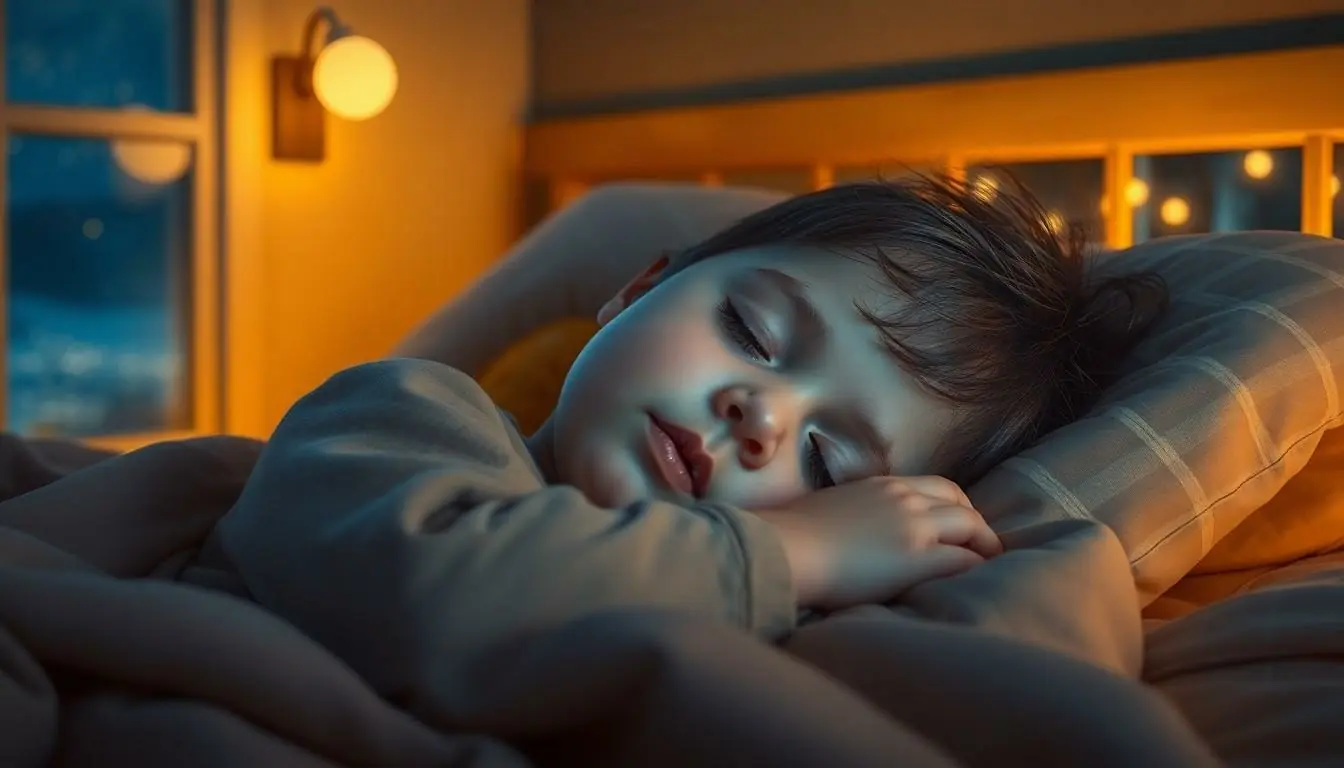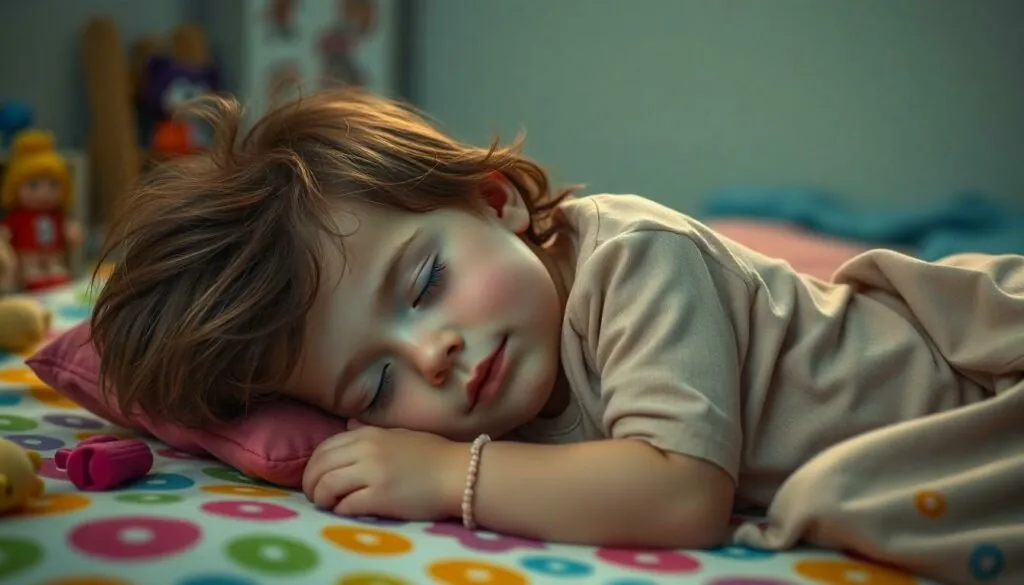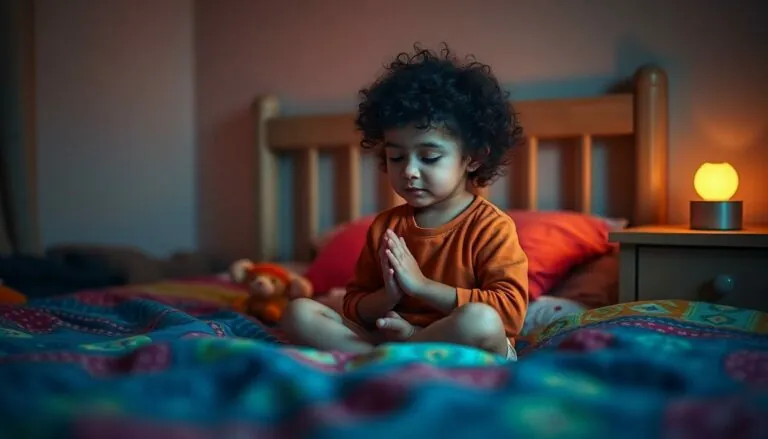Table of Contents
ToggleEver walked into a room and felt like you were being watched, only to discover a kid snoozing with their eyes wide open? It’s like a scene straight out of a horror movie, but don’t worry. This peculiar phenomenon isn’t as spooky as it seems.
Kids sleeping with their eyes open might seem odd, but it’s more common than one might think. It can leave parents scratching their heads and wondering if their little ones are channeling their inner owl. Understanding why this happens can ease those worries and maybe even get a chuckle or two. So, let’s dive into the quirky world of sleep habits and uncover the reasons behind those wide-eyed dreamers.
Understanding Nocturnal Eyelid Exposure
Nocturnal eyelid exposure, often referred to as sleeping with eyes open, happens when eyelids don’t close completely during sleep. Children experience this phenomenon more frequently than adults, primarily due to anatomical differences in their eyelid structure. Missing or reduced eyelid closure leads to the eyes remaining partially open, which may look uncomfortable but usually isn’t harmful.
Dryness and irritation might occur if a child’s eyes aren’t adequately closed. The cornea requires moisture, so exposure can lead to symptoms like redness or minor discomfort. Many times, kids don’t even realize their eyes are open while they sleep, showcasing a natural protective reflex that helps when sleeping in varying positions.
Understanding the causes can help alleviate parental worries. Some children display nocturnal eyelid exposure due to factors such as sleep disorders or certain medications that affect muscle tone. Heat and humidity can also heighten the likelihood of this occurrence.
Numerous studies indicate that this phenomenon is prevalent during sleep stages, particularly REM sleep when rapid eye movements happen. Parents may notice that the phenomenon can vary with environmental conditions, sleep patterns, or even stress levels, underscoring the need for a stress-free bedtime routine.
Medical evaluation can be worthwhile if symptoms like persistent redness or irritation appear. Nonetheless, nocturnal eyelid exposure often resolves without intervention as a child matures. Understanding this phenomenon provides insight into the quirky nature of children’s sleep habits, promoting a sense of reassurance for parents witnessing this unusual occurrence.
Common Causes of Sleep with Open Eyes

Children often sleep with their eyes open due to a variety of reasons. Understanding these factors helps address parental concerns.
Genetic Factors
Genetic predisposition plays a significant role in eyelid structure and function. Some children inherit traits that lead to eyelids having less muscle tone. Families with a history of this phenomenon may notice similar patterns in their children. Such characteristics can increase the likelihood of sleeping with eyes open. Genetic influences may combine with other factors, contributing to variations in sleep behaviors among siblings.
Environmental Influences
Environmental conditions significantly impact the likelihood of children sleeping with open eyes. Heat and humidity often exacerbate this occurrence, as they can cause discomfort and trigger involuntary eye exposure. Additionally, dry air can contribute to dryness in the eyes, leading to irritation. Changes in a child’s sleeping environment, including room temperature and humidity levels, affect eye comfort during sleep. Parents should consider these factors when evaluating their child’s sleep habits.
Impact on Sleep Quality
Kids sleeping with their eyes open can affect overall sleep quality, leading to potential challenges in their rest patterns. The phenomenon may result in disturbances during the night, causing disruptions to deep sleep stages.
Behavioral Aspects
Children exhibiting this behavior may not show any awareness that their eyes are open. They often appear peaceful while sleeping, yet their body might be undergoing rest interruptions. Lack of deep sleep can influence their mood and attention levels during the day. Discomfort from dry eyes may lead to restlessness, resulting in increased movement or atypical sleep positions. Parents can help by establishing calming bedtime routines that promote relaxation, ultimately fostering better sleep hygiene.
Physical Health Considerations
Physical health also plays a critical role in children’s sleep quality. Open eyes during sleep can cause dryness and irritation, which may affect overall wellbeing. Continuous exposure to irritants can lead to inflammation, prompting discomfort. In some cases, persistent eye exposure could result in complications like corneal abrasions. Addressing environmental factors such as humidity and temperature helps mitigate these health concerns. Ensuring a conducive sleep environment promotes both physical comfort and restful sleep.
When to Seek Medical Advice
Parents should monitor their child’s sleep habits. If a child consistently sleeps with their eyes open, it may warrant attention. Persistent dryness or irritation experienced during the night can be concerning.
Seek medical advice if children show signs of distress or discomfort. Observing behaviors such as excessive blinking or rubbing their eyes may indicate a problem. Additionally, changes in mood or sleep patterns could suggest interruptions in restful sleep.
A medical professional should evaluate any potential sleep disorders. Noticing a family history of related conditions can enhance understanding of the issue. Eye care specialists may provide guidance on protective measures to alleviate symptoms.
If environmental factors are ruled out, further assessment is crucial. Parents can benefit from detailed insights about their child’s specific circumstances. In some cases, medications could influence eyelid function, calling for a thorough review by a healthcare provider.
Urgent medical consultation is necessary if children develop corneal abrasions. Immediate attention can help prevent complications that may arise from prolonged exposure. Taking these steps can significantly contribute to a child’s overall well-being.
Conclusion
Understanding why kids sleep with their eyes open can ease parental worries. This common phenomenon often stems from anatomical differences and environmental factors. While it may seem concerning at first glance, most cases are harmless and tend to resolve as children grow.
Parents should pay attention to their child’s sleep habits and ensure a calming bedtime routine to promote better sleep quality. If symptoms persist or if there’s noticeable discomfort, consulting a healthcare professional can provide reassurance and guidance. Monitoring sleep patterns and addressing any underlying issues can help ensure a restful night for both children and parents alike.







